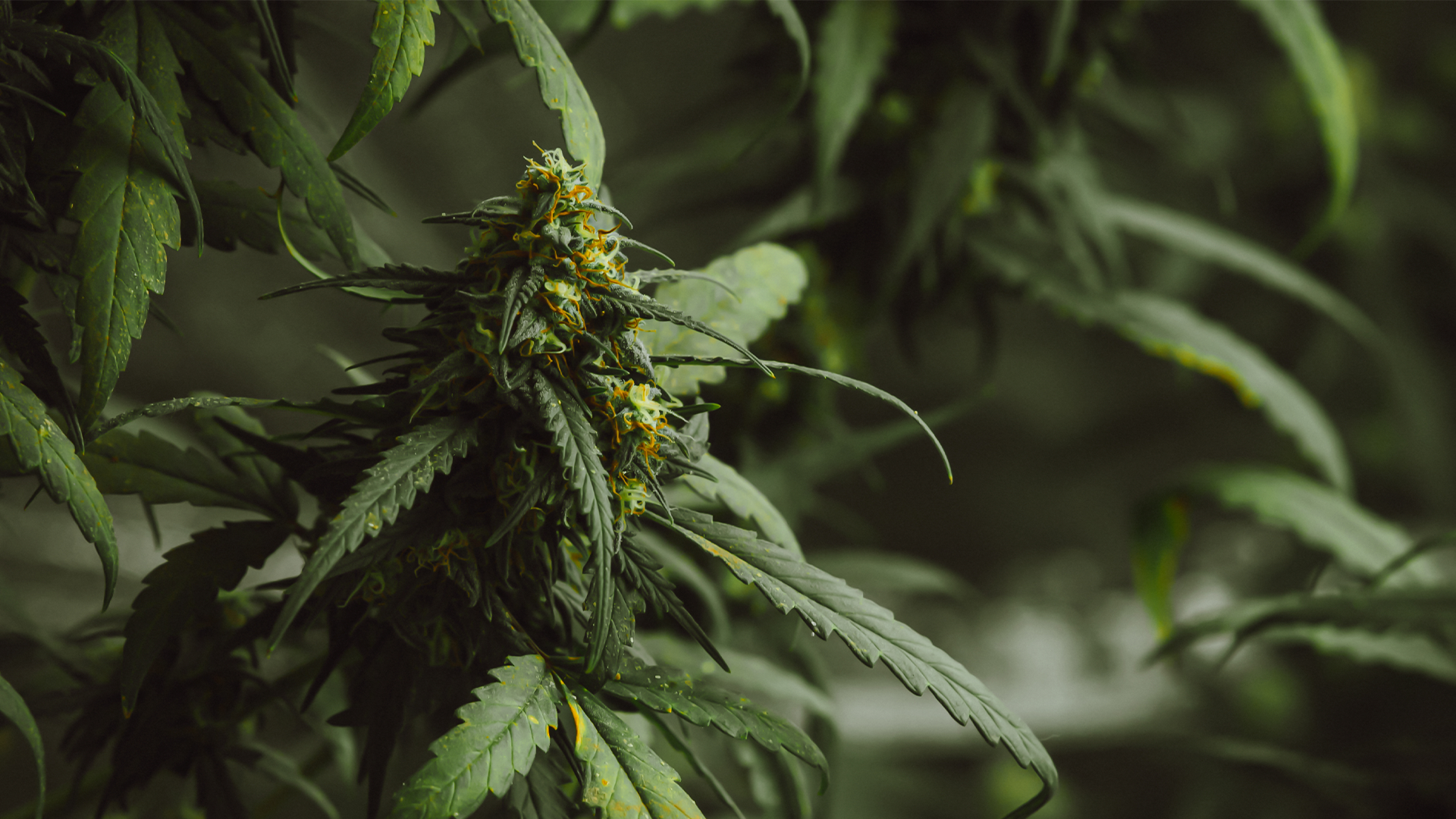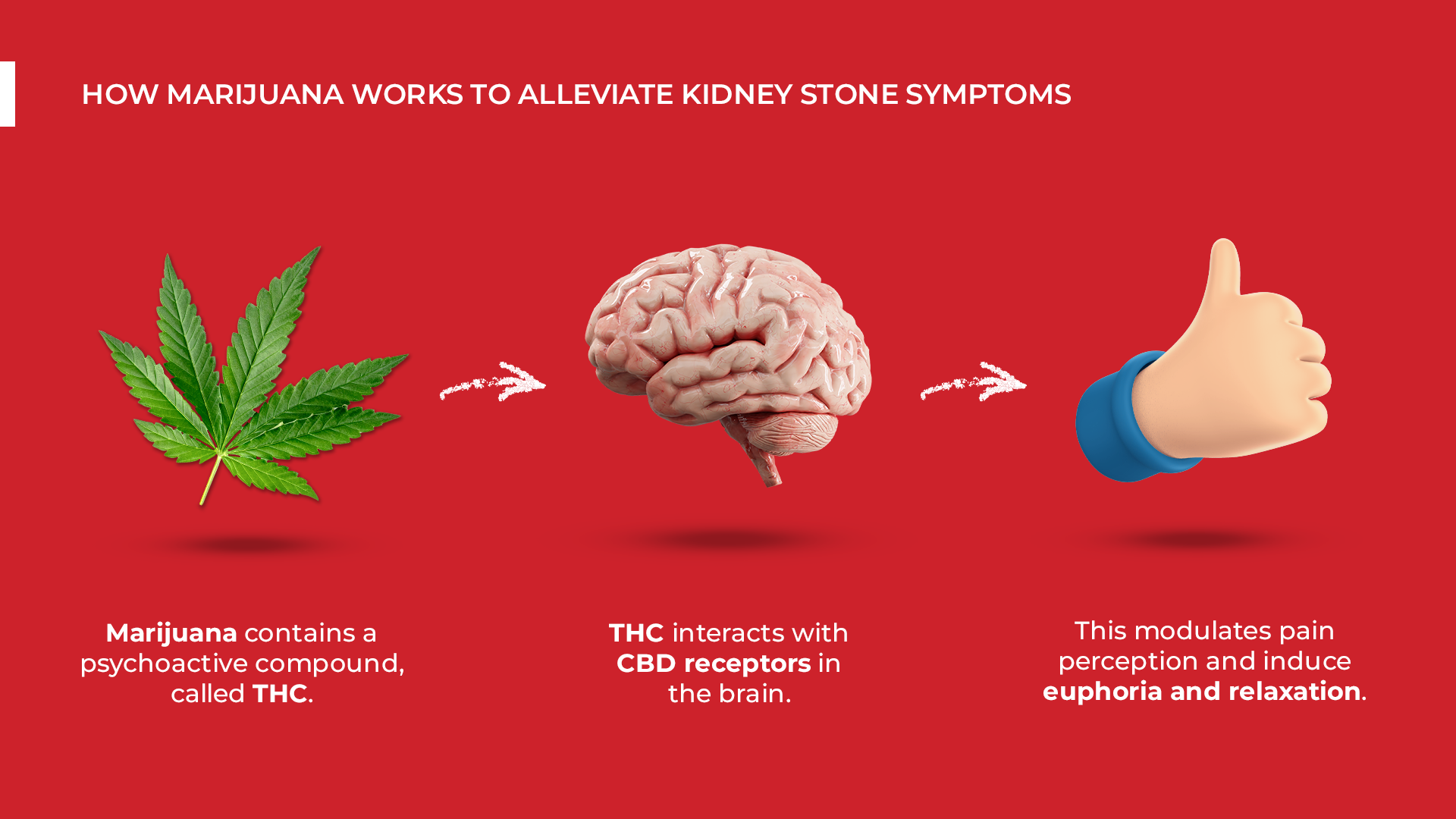Published: March 10, 2024 | 1 min read
Is Marijuana Use Linked to Kidney Stone Risk?
Roughly 26.04% of individuals in the United States have admitted to using marijuana or cannabis at least once in their lifetimes. The expanding legalization of marijuana anticipates that the population exposed to cannabis will continue to grow.
Now, people know kidney stones for causing extreme pain. Marijuana is a potent pain reliever. That’s why many people are raising questions as to whether it is safe for symptom management and whether it will not negatively affect stone risk.
So, in this article, we will address these questions and give you valuable insight into the possible implications of cannabis use for kidney stones.

WHAT IS MARIJUANA?
Cannabis, commonly called marijuana, derives from the Cannabis sativa L. plant. Marijuana is a broad term that describes the dried flowers, leaves, stems, and seeds of the Cannabis plant. The active compounds in this plant are called cannabinoids.
Researchers initially identified the first cannabinoid, cannabinol, in 1896 and later synthesized and clinically studied it in 1940. Then, organic chemist and professor Raphael Mechoulam discovered another significant cannabinoid, delta-9-tetrahydrocannabinol (THC), in Israel in 1964. It led to the discovery of cannabinoid receptors (CB) and the endocannabinoid (EC) system in the kidneys.
The endocannabinoid system is a complex network in our body that responds to cannabinoids. Long-chain polyunsaturated fatty acids, like arachidonic acid, produce compounds called endocannabinoids. These cannabinoids interact with two primary receptors, known as CB1 and CB2. Many tissues, including the kidneys, have these receptors.
There are more than four hundred different cannabinoids identified so far. Among these, some of the most important ones are:
- Δ9-tetrahydrocannabinol (Δ9-THC) – Primary psychoactive compound found in cannabis. It is responsible for the “high” or euphoric effects of marijuana use. It has pain relief and anti-nausea effects.
- Δ8-tetrahydrocannabinol (Δ8-THC) – Similar in structure to Δ9-THC but with milder psychoactive effects
- Cannabinol (CBN) – A weak psychoactive compound. It is has sedative effects.
- Cannabidiol (CBD) – A non-psychoactive cannabinoid. It has gained significant attention for its potential therapeutic properties, which include anti-inflammatory, analgesic (pain-relieving), anti-anxiety, and anti-seizure effects.
MARIJUANA’S IMPACT ON KIDNEY STONES
Researchers analyzing data from 14,324 participants obtained through the National Health and Nutrition Survey (NHANES) from 2009 to 2018 found that marijuana use decreased the risk of developing kidney stones in males. They also found no significant association between marijuana and kidney stones in females. This was after considering other potential factors.
Looking at how kidney stones form explains this inverse effect. Previous research in mice showed that cannabinoids, compounds found in cannabis, increased urine output without affecting the excretion of chloride (Cl-) and potassium (K+). This diuretic effect of cannabinoids reduces the time stone-forming elements spend in the kidney, lowering the risk of kidney stone formation.
Additionally, cannabidiol, one of the main components of cannabis, has anti-inflammatory and antioxidant properties. The kidney often develops carbonated calcium and phosphate plaque, known as Randall’s Plaque. This plaque is the ground zero for calcium-oxalate crystals. Now, inflammation favors the formation of Randall’s Plaque. So, the anti-inflammatory effect of cannabidiol will help decrease the likelihood of its development.
Furthermore, studies have found a link between crystal buildup in the kidney, reactive oxygen species production, and activation of inflammasomes (multiprotein complexes). That’s because the combination of oxidative stress and inflammation can lead to cellular damage within the kidney tissue. This damage can disrupt the normal processes of maintaining fluid and electrolyte balance in the kidney, indirectly leading to the accumulation of crystals. Cannabidiol may have natural advantages in reducing inflammation and oxidative stress, potentially benefiting individuals prone to kidney stone formation.
BENEFITS IN SYMPTOMS MANAGEMENT
People widely recognize marijuana for its effective alleviation of pain, nausea, and vomiting. Kidney stones are often associated with these three symptoms. THC interacts with CB1 receptors in the brain to modulate pain perception and induce euphoria and relaxation.
Additionally, CBD acts as an antioxidant and anti-inflammatory agent. Therefore, it can potentially help balance the body’s redox (reduction-oxidation) system and prevent inflammation to further alleviate pain.
Research suggests that aside from managing some kidney stone symptoms, CBD may also help address conditions like anxiety, diabetes, diabetes-related heart problems, and neurodegenerative diseases like Alzheimer’s among others.

POTENTIAL ADVERSE EFFECTS
Though marijuana has promising therapeutic effects, it may also negatively impact your health in many ways.
Psychoactive effect
Marijuana contains a psychoactive compound, called tetrahydrocannabinol (THC), responsible for its “high” effects when consumed. This is the primary reason why there has been ongoing debate surrounding marijuana use. Nevertheless, cannabidiol (CBD), another compound in the cannabis plant, is distinctively non-psychoactive. Meaning it doesn’t induce mind-altering effects. People believe it has low toxicity in humans and other species. That’s why it garnered attention for its potential therapeutic advantages. Manufacturers typically extract CBD from hemp, a cannabis variety with very low THC content.
Liver Impact
Some studies have identified that CBD treatment leads to elevated levels of enzymes ALT (Alanine Aminotransferase) and AST (Aspartate Aminotransferase), both indicators of liver damage. This disqualifies CBD as the drug of choice for primary treatment. Moreover, CBD may interfere with the liver’s metabolism of certain medications by deactivating cytochrome P450 3A (CYP3A) and cytochrome P450 2C (CYP2C). CYP3A are the most abundant and essential drug-metabolizing enzymes in the body.
Kidney Impact
The CB1 receptor, previously believed to be mainly located in the central and peripheral nervous system, had been abundantly found in the kidneys. In the same way, the CB2 receptor initially thought to be mainly in immune cells, has been identified in kidney tissues. These receptors are discovered in various parts of the human and rodent kidneys, such as the proximal convoluted tubules (initial filtration unit), distal tubules (final filtration unit), collecting duct, as well as in other areas of the nephron (kidney’s functional part). Since CB1 and CB2 receptors are scattered throughout the kidneys, they play diverse roles in kidney function.
In normal circumstances, the EC system helps regulate kidney functions like blood flow, sodium reabsorption, and the excretion of proteins in urine. These effects are mainly achieved through the activation of the CB1 receptor. However, the exact effects of the EC system on normal and diseased kidneys are not yet entirely understood, mainly due to the intricate processes involved in creating and breaking down ECs. Additionally, the varied distribution and functions of CB1 and CB2 receptors in different kidney structures and cell types can lead to diverse signaling effects, making it challenging to predict the overall impact.
However, studies involving mice with enhanced CB1 receptor expression throughout the kidneys showed increased protein excretion in their urine. This is because CB1 receptors affect the podocytes (specialized filters) and mesangial cells (provide structural support) within the glomerulus (kidney’s filtration unit). This excessive activation of the CB1 receptor led to an increase in the synthesis of vascular endothelial growth factor (VEGF). VEGF is a signaling protein or growth factor that plays a crucial role in forming new blood vessels and the growth of blood vessels. Excess CB1 also caused a decrease in nephrin, an essential protein involved in regulating podocyte function. These findings suggest that disturbances in the CB1 receptor or its activity can affect the kidney’s filtration.
Acute kidney injury (AKI) was also documented among individuals exposed to synthetic cannabinoids, such as Spice (or K2), due to tubular necrosis. Tubular necrosis is a type of kidney injury that occurs when the cells lining the tiny tubes in the nephron (the basic functional part of the kidney) become damaged and die. Nevertheless, it is unclear whether similar adverse effects could occur with medical or recreational cannabis.
Regarding chronic kidney disease (CKD), one study found that individuals who used illicit substances had a higher risk of mild kidney function decline over 7 years. However, the association between marijuana use and kidney function decline was not statistically significant. Since limited information is available about the effects of cannabis and cannabinoid use on CKD development and progression, no conclusion can be drawn yet.
Reproductive Impact
In studies involving male and female rodents, the use of cannabinoids, such as THC, CBN, and CBD, whether in the short term or over a longer period, has been linked to reduced sexuality. For instance, THC can disrupt the regular ovulatory (menstrual) cycle in females. In the same way, there’s evidence suggesting that cannabinoids can lower testosterone levels, and cause abnormal sperm morphology (structure). Meanwhile, there isn’t yet clear evidence that cannabis increases the risk of birth defects. However, research suggests that there might be lasting impacts on memory, information processing, and executive functions in the children of mothers who used cannabis during pregnancy.
TAKEAWAYS
Marijuana use has been gaining attention due to its potential medical benefits. However, since it has psychoactive effects, many doctors resorted to suggesting CBD (a component of marijuana) instead. Although CBD is non-psychoactive, its overall impact on the kidneys and other organs is still in question. Thus, more research is needed to fully understand the effects of cannabinoids on human health.
If you are looking for a safer and more effective way of treating your kidney stones, you can choose CLEANSE instead. CLEANSE has organic natural ingredients with pain-relief, anti-inflammatory, diuretic and stone-dissolving properties. Using this product will help you pass kidney stones, with less discomfort, and guaranteed zero adverse effects.
REFERENCES
- Antioxidative and Anti-Inflammatory Properties of Cannabidiol
- Association between marijuana use and kidney stone: a cross-sectional study of NHANES 2009 to 2018
- Cannabidiol Attenuates Cisplatin-Induced Nephrotoxicity by Decreasing Oxidative/Nitrosative Stress, Inflammation, and Cell Death
- Cannabinoids and the kidney: effects in health and disease
- Cannabinoids as novel anti-inflammatory drugs
- Cannabinoid receptors in the kidney
- Endocannabinoid System and the Kidneys: From Renal Physiology to Injury and Disease
- Medical Marijuana and Kidney Stones: Can Patients Benefit?
Comments or questions?
Responses
You must be logged in to post a comment.

This is so informative. Thank you